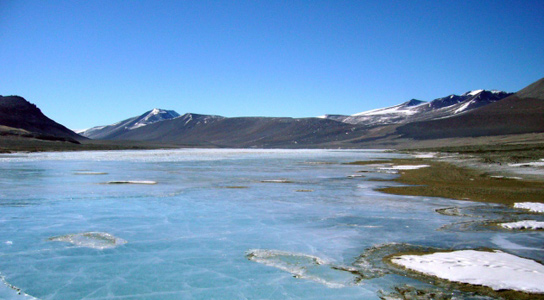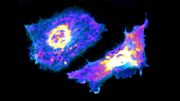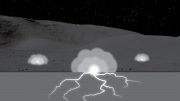
Diverse microbial life may use different strategies to survive in Lake Vida’s freezing and hostile Antarctic waters. Credit: Photo by Bernd Wagner, University of Cologne, Germany
Lake Vida in Antarctica is covered by an ice cap up to 27 meters (89 feet) thick, is six times saltier than sea water, and with an average temperature of −13 °C (8.6 °F) is one of the coldest aquatic environments on the planet. However, it is teeming with microbial life.
The scientists published their findings in the journal Proceedings of the National Academy of Sciences. Lake Vida is the largest body of water in the McMurdo Dry Valleys Antarctic desert and researchers drilling into the lake have found plenty of bacteria.
The researchers drilled into the lake twice, once in 2005 and again in 2010. Samples from both trips yielded around one-tenth of the abundance of cells found in freshwater lakes in moderate climate zones. Cells measured up to 1 micrometer in diameter, but contained more particles that were 0.2 micrometers in diameter.
Genetic analysis of the cells indicates that they are related to known types of bacteria. However, the scientists found one type that had no relatives, and may represent a new phylum. The scientists have not yet figured out how the bacteria produce energy. They could be living on dissolved organic carbon or they might use more exotic forms of energy. Bacteria in deep gold mines are known to survive on molecular hydrogen produced by the chemical reactions in the nearby rocks.
The ice cap over the lake grows higher as the melt water from surrounding glaciers flows over the ice, and refreezes. The isotope analysis of these particles indicates that the ice has been sealed for about 2,800 years, so any carbon in the brine must have been there at least that long.
There are no naturally occurring predators in the lake, and because the microbes are isolated, the cells might have switched to a biologically reduced survival mode, without cell division and reproduction, which could allow them to endure stress and harsh environments for a long period.
Since Lake Vida is sealed, it’s likely to be different in terms of geochemistry and biology from Antarctica’s subglacial rivers and lakes, which have been under the ice for millions of years. “It is another extreme place where life is found and it provides evidence of a different set of boundary conditions in which life can exist,” states Martin Siegert, a glaciologist at the University of Bristol, UK.
Reference: “Microbial life at −13 °C in the brine of an ice-sealed Antarctic lake” by Alison E. Murray [email protected], Fabien Kenig, Christian H. Fritsen, Christopher P. McKay, Kaelin M. Cawley, Ross Edwards, Emanuele Kuhn, Diane M. McKnight, Nathaniel E. Ostrom, Vivian Peng, Adrian Ponce, John C. Priscu, Vladimir Samarkin, Ashley T. Townsend, Protima Wagh, Seth A. Young, Pung To Yung and Peter T. Doran, 26 November 2012, Proceedings of the National Academy of Sciences.
DOI: 10.1073/pnas.1208607109









Be the first to comment on "Antarctic Lake Vida Has a Bounty of Microbial Life"